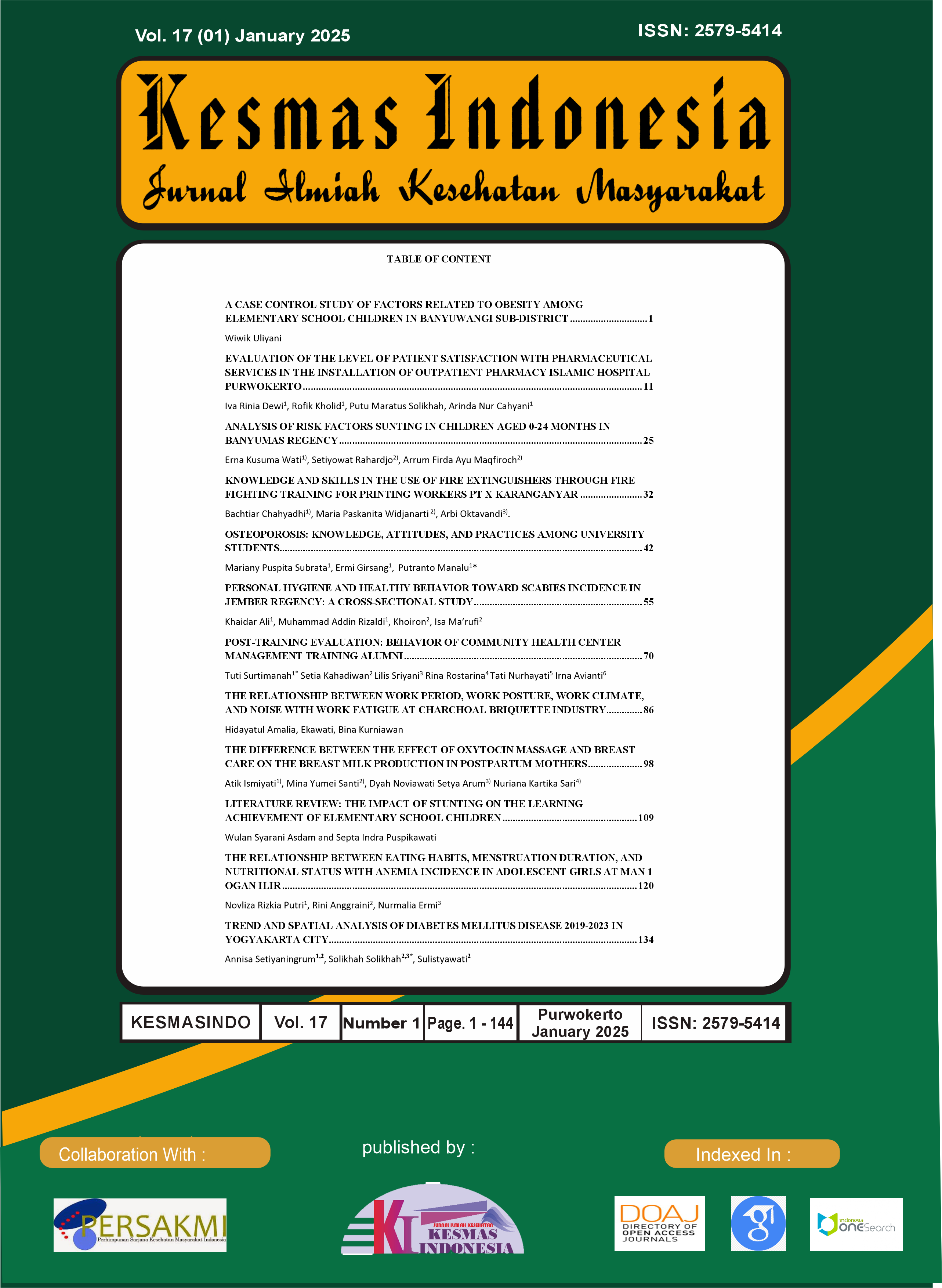PERSONAL HYGIENE AND HEALTHY BEHAVIOR TOWARD SCABIES INCIDENCE IN JEMBER REGENCY: A CROSS-SECTIONAL STUDY
Abstract
This study aims to analyze the relationship between personal hygiene and behavior with scabies incidence among students (santri) in Khalafi and Salafiyah Islamic boarding schools in Jember Regency.
This quantitative research utilized a cross-sectional approach. The outcome variable was scabies incidence, while the exposure variables were personal hygiene and healthy behavior. The cluster random sampling was used, where the Islamic boarding schools were grouped into Khalafi (Modern) and Salafiyah (Conservative). The total respondents from the Khalafi dan Salafiyah was 89 and 62, respectively. The relationship between variables was assessed using the chi-square test, where the Prevalence Ratio (PR) was estimated. Path analysis was conducted in SmartPLS3.
The scabies prevalence in the Khalafi and Salafiyah is 41 cases (46.07%) and 16 cases (25%), respectively. In both types of Islamic boarding schools, personal hygiene and healthy behavior were significantly associated with scabies (p < 0.05), with personal hygiene showing a strong correlation (Coefficient > 0.5). The PR estimation in Khalafi school is age (PR: 1.27), sex (PR:4.41), personal hygiene (PR: 10.87) and healthy behavior (PR: 13.27) toward scabies incidence. The PR estimation in Salafiyah is age (PR: 3.79), sex (PR: 2.03), and personal hygiene (PR: 42.64). The model found that the personal hygiene can influence the scabies incidence.
The scabies incidence was found high in Khalafi compared to Salafiyah, in which personal hygiene and healthy behavior were positively significant. Exposure variable is associated with a higher likelihood of scabies incidence. Therefore, Islamic boarding schools and the Jember Health Office organize educational and training programs on personal hygiene and healthy behaviors for students.




.png)




